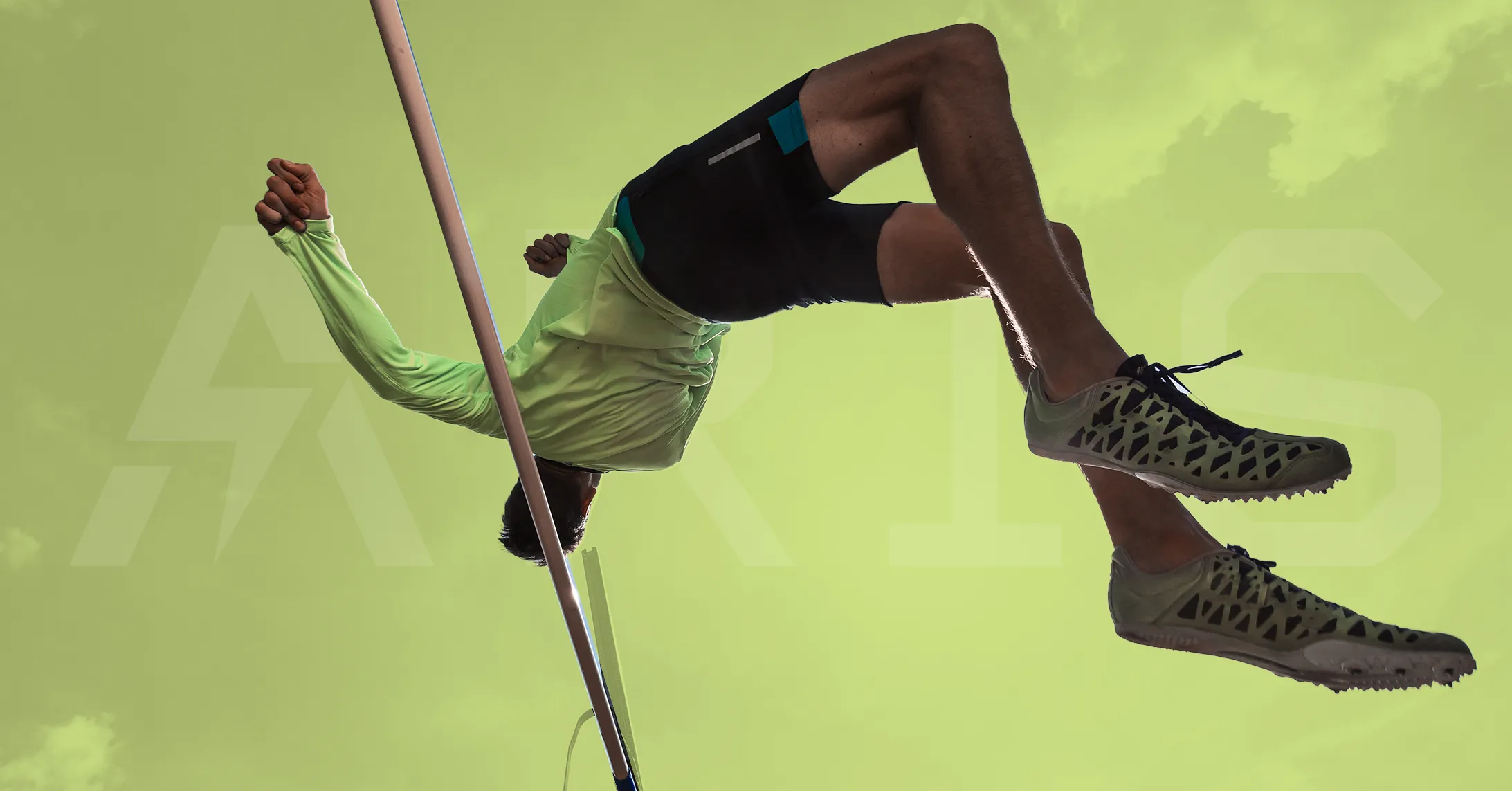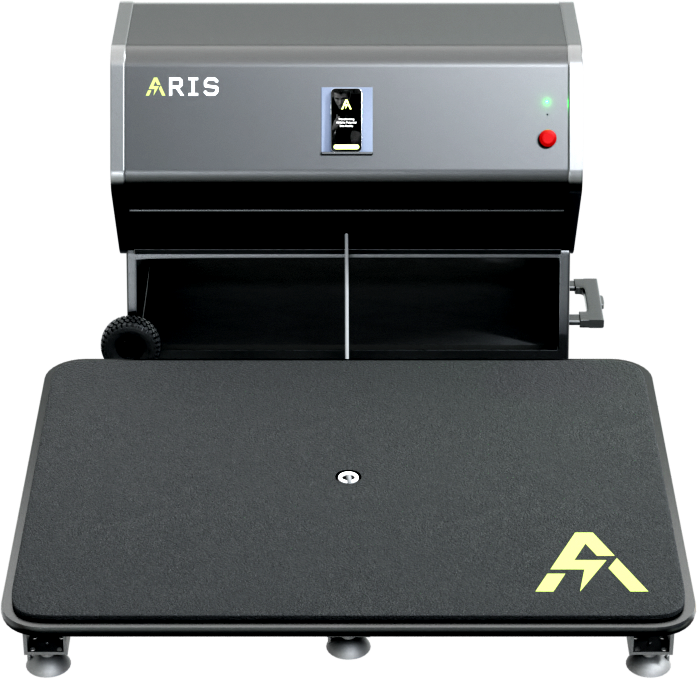Go Airborne: A Step-by-Step Plan to Increase Your Vertical Jump and Reach New Heights

If there were ever a vertical jump to be envied, it would be that from the one and only man that played side-by-side with Bugs Bunny and Daffy Duck…that’s right, the one and only MJ.
Now, we don’t have any insight on how to make your arm stretch like it did in the final 3 seconds in his game against the martians, but we might have more insight than he did about how to increase your vertical jump.
In his own words in this interview, “I really don’t understand the physics of jumping and how you increase that,” Jordan said. “The things that I can say I did when I was a kid to improve my jumping are very basic things.
I used to ride the bicycle a lot, I used to work on jumping.”
Thanks to some advances in technology that we’ve developed, we’ve built a step-by-step plan to increase your vertical jump.
How to Increase Your Vertical Jump
There is a science to increasing your vertical leap. The power of your vertical jump comes from explosiveness – and the explosiveness relies heavily on strength and velocity.
In short, to jump higher, you have to jump harder and faster. Easier said than done – but again, we have the edge on MJ.
Set Your Baseline
Before any improvement can be made, you have to know where you are at today. A baseline allows you to monitor your improvement and understand if what you are doing (or about to be doing) is actually working.
While the ArisPro can help measure your vertical jump, it’s also possible to measure without equipment. All you need is some tape, a wall, and the ability to jump.
Start with the Basics: Proper Jumping Technique and Form
Once your baseline has been established, it’s time to start fine tuning your vertical jump. This begins with the fundamentals – utilizing proper technique. Many natural athletes who have impressive jumping abilities have been able to greatly improve their vertical jump simply from improving their form.
- Strong Base: Begin with your feet positioned shoulder-width apart. Slightly angle your toes outward to enhance stability. Distribute your weight evenly over the midfoot and maintain a slight bend in your knees. This stance engages your leg muscles and sets the stage for a powerful takeoff.
- Implement Your Arms and Hips: The synergy between your arms and hips is crucial for an effective vertical jump. Initiate the movement by swinging your arms forcefully backward while simultaneously bending your hips and knees. This coordinated action generates momentum, transferring energy from your upper body to your lower body. As you launch into the jump, drive your arms forward and upward, adding to the explosive power that propels you off the ground.
- Keep Your Feet Close: Maintaining the proximity of your feet during the jump optimizes control and minimizes air resistance. As you ascend, focus on driving your hips upward and forward, simultaneously pulling your knees toward your chest. This dual action maximizes the height you can achieve. By keeping your feet close together, you enhance stability and manage your movement’s precision.
- Soft Landing: As you descend from the jump, shift your focus to preparing for a safe landing. Begin bending your hips and knees to absorb the impact. Land on the balls of your feet initially, and then gradually allow your heels to make contact with the ground. This progressive landing approach spreads the impact across your leg muscles, reducing stress on joints. By avoiding locked or overly bent knees, you ensure a controlled and injury-resistant landing.
Strength Training Exercises to Jump Higher
Now that we have the form established, it’s important that you start implementing exercises to build strength. Remember, a high jump requires strength and velocity. But velocity is built with strength.
- Squats: Naturally, squats are going to be among one of the top exercises you can do to improve your strength. When performing squats – whether they are air-squats, back-squats, or front-squats, it’s important to set a solid base. Much like what you would do to start your jump.
- Jump Squats: Strength is built through reps – so the more you jump, the more you gain the ability to jump higher. Jump squats take the idea of a traditional air-squat and combine it with the repetition of jumping. Just like a normal squat, you go into the bottom of a squat where your backside is parallel or below your knees. Then, as you stand to the top of your squat, carry your arms and legs through the top until you come into a jump. The higher the jump, the more intense the drill becomes.
- Box Jumps: A drill that combines Jump Squats and a jump with an achievable goal, box jumps are a great way to give athletes a visual target to increase their vertical. By setting a box with a fixed height, athletes stand directly in front of the box and attempt to jump up the box, landing softly on the balls of their feet to minimize impact, and stand completely upright. Step or jump down, and repeat for as many repetitions as wanted.

7 More Drills to Increase Strength For Vertical Jump Explosiveness
Other drills you may consider implementing into your routine include drills such as depth jumps, box squats, deadlifts, Romanian deadlifts, lunges with explosive jumps, kettlebell swings, and split squat jumps.
Plyometric Exercises to Get More Air Time In Your Jump And Increase Agility
As your explosiveness increases, you will also need to improve your agility. If you know anything about multiplication, anything multiplied by zero equals zero. Since power is force times velocity, if one or the other is lacking, then the power will be down.
Here are some drills to improve your agility:
- One-Leg Jump: A one-leg jump, also known as a single-leg jump or unilateral jump, is a vertical jump performed using only one leg instead of both legs simultaneously. They can help address any imbalances between your legs and improve overall lower body athleticism.
- Wall Sits: Wall sits are an isometric exercise that targets the quadriceps, hamstrings, and glutes. By holding a static squat position against the wall, you build strength and endurance in the lower body muscles. You can learn more about Wall Sits and other dynamic basketball jumping drills to amplify your vertical leap here.
- Double Tap: Also known as penguin hops, double taps emphasize fast movements in muscle fibers and power in your legs. Repetition not only builds strength, it builds speed. To do a double tap, Perform a quick, explosive jump off the ground. While in mid-air, tap your thighs with your hands twice (double tap). Make sure to land softly with your knees slightly bent to absorb the impact.
7 Other Drills to Improve Vertical Jump and Agility
Other drills you may find helpful include lateral hops, ladder drills, tuck jumps, cone drills, depth drops, dot drills, and box lateral jumps.
Test Against Your Baseline
Testing should be done at least once a month. The idea behind this is that as you perform full-body exercises, you will build up and break down muscle groups. As they tear down, your body will heal itself and – so long as you have a healthy protein supply – will build stronger muscle tissue.
As you grow stronger, it’s important that you retest against your baseline and set PRs.
How ArisPro Can Ramp Up Your Vertical Jump Ability
Going through cycles of training and testing can be a grind. Because of the intricacies of developing your vertical, you may see only marginal improvements – if any – when training on your own.
With the ArisPro, you can gain access to training that pro-athletes utilize daily, and for a fraction of the cost. However, it’s not the resistance training that makes the ArisPro amazing.

- Self-Paced App: Equipped with a library of drills to improve your vertical jump, the ArisPro is paired with its exclusive app that allows you to work on drills to reach your goals.
- Data-Driven Insights: Every exercise is recorded and synced with the cloud-based app. This allows you to visualize your improvements and find areas of atrophy. Know exactly what you need to do to improve.
- AI Coaching: Pro-athletes have continuous access to coaches and data-analysts whose entire job is to tell them what drills to perform and how to improve them. Aspiring athletes are often not afforded this luxury.
The ArisPro utilizes proprietary AI technology that essentially provides a personal coach to its users. By analyzing the data obtained through previous workouts, it can develop personal training routines that get athletes closer to their objectives. - Improves Run and Side Stepping: Any athlete knows that a game isn’t won in how they jump – it matters how fast they can get from point A to point B. It also matters to keep your opponent from reaching their goal line or from getting within shooting range.
With its multi-functioning components, the ArisPro can be used not only as a vertical jump machine, but as a run and side stepping trainer as well.
Ready to improve your athletes’ performance? Order the ArisPro.

